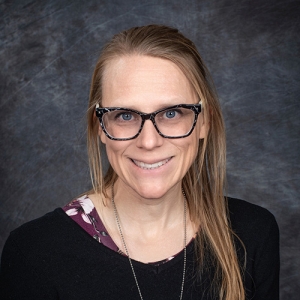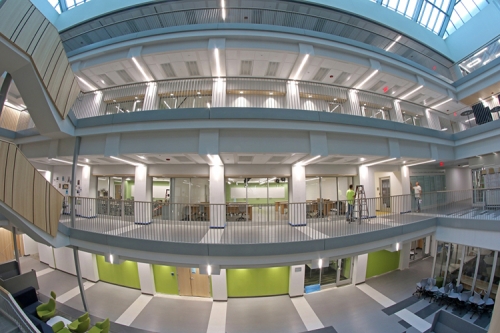- "Al3+ Modification of Graphene Oxide Membranes: Effect of Al Source.” E. J. Robertson, Y. Y. Stehle, X. Hu, L. Kilby, K. Olsson, M. Nguyen, and R. Cortez. Membranes, 2022, 12, 1237.
- “Tuning the Packing Density of Gold Nanoparticles in Peptoid Nanosheets Prepared at the Oil-Water Interface.” E. J. Robertson and C. Tran Minh, Langmuir, 2022, 38, 13206-13216.
- “Using Al3+ to Tailor Graphene Oxide Nanochannels: Impact on Membrane Stability and Permeability.” Y. Y. Stehle, E. J. Robertson, R. Cortez, I. V. Vlassiouk, R. B. Bucinell, K. Olsson, and L. Kilby. Membranes, 2022, 12, 871.
- “In-plane and through-plane dielectric properties of graphene oxide membrane: Effect of Al3+ modification.” Y. Y. Stehle, E. J. Robertson, R. Cortez, R. B. Bucinell, and I. V. Vlassiouk. Materialia, 2022, 23, 101442.
- “Synthesis and Characterization of Plasmonic Peptoid Nanosheets.” E. J. Robertson, C. Avanessian, J. R. Davis, A. K. Mahony, and E. V. Whitney. Chem. Commun, 2021, 57, 2748.
- “Glycosylated Peptoid Nanosheets as a Multivalent Scaffold for Protein Recognition.” A. Battigelli, J. Kim, D. Dehigaspitiya, C. Proulx, E. J. Robertson, D. Murray, B. Rad, K. Kirshenbaum, and R. N. Zuckermann. ACS Nano, 2018, 12, 2455.
- “Structure-rheology relationship in nanosheet-forming peptoid monolayers.” E. J. Robertson, E. M. Nehls, and R. N. Zuckermann. Langmuir, 2016, 32, 12146. Featured as front cover of vol. 32, issue 46.
- “Molecular engineering of the peptoid nanosheet hydrophobic core.” E. J. Robertson, C. Proulx, J. Su, R. Garcia, S. Yoo, E. M. Nehls, M. D. Connolly, L. Taravati, and R. N. Zuckermann. Langmuir, 2016, 32, 11946. Featured as front cover of vol. 32, issue 45.
- “Improved chemical and mechanical stability of peptoid nanosheets by photo-crosslinking the hydrophobic core.” D. Flood, C. Proulx, E. J. Robertson, A. Battigelli, S. Wang, A. M. Schwartzberg, and R. N. Zuckermann, Chem. Commun. 2016, 52, 4753. Featured as inside front cover of vol. 52, no. 26.
- “Highly stable and self-repairing membrane-mimetic 2D nanomaterials assembled from lipid-like peptoids.” H. Jin, F. Jiao, M. D. Daily, Y. Chen, F. Yan, Y. Ding, X. Zhang, E. J. Robertson, M. D. Baer, and C. Chen, Nat. Commun. 2016, 7, 12252.
- “Design, synthesis, and assembly of peptoid nanosheets.” E. J. Robertson, A. Battigelli, C. Proulx, R. V. Mannige, T. K. Haxton, S. Whitelam, and R. N. Zuckermann, Acc. Chem. Res., 2016, 49, 379. Featured as front cover of vol. 49, issue 3.
- “Peptoid nanosheets exhibit a new secondary-structure motif.” R. V. Mannige, T. K. Haxton, C. Proulx, E. J. Robertson, A. Battigelli, G. L. Butterfoss, R. N. Zuckermann, and S. Whitelam, Nature, 2015, 526, 415. Featured in a C&En news article: “Peptoids Do a Double Twist.“ 2015, 93(40), p.30.
- “Twist and turn: Effect of stereoconfiguration on interfacial assembly of polyelectrolytes.” N. A. Valley, E. J. Robertson, and G. L. Richmond, Langmuir, 2014, 30, 14226.
- “Molecular insights in the structure and layered assembly of polyelectrolytes at the oil/water interface.” E. J. Robertson and G. L. Richmond, J. Phys. Chem. C, 2014, 118, 28331. Featured as front cover of vol. 118, issue 49.
- “Assembly and molecular order of two-dimensional peptoid nanosheets through the oil-water interface.” E. J. Robertson, G. K. Olivier, M. Qian, C. Proulx, R. N. Zuckermann, and G. L. Richmond, Proc. Natl. Acad. Sci. U.S.A, 2014, 111, 13284.
- “Metal Ion Induced Adsorption and Ordering of Charged Macromolecules at the Aqueous/Hydrophobic Liquid Interface.” E. J. Robertson, A. P. Carpenter, C. M. Olson, R. K. Ciszewski, and G. L. Richmond, J. Phys. Chem. C, 2014, 118, 15260.
- “Designated Drivers: The Differing Roles of Divalent Metal Ions in Surfactant Adsorption at the Oil-Water Interface.” E. J. Robertson, D. K. Beaman, and G. L. Richmond, Langmuir, 2013, 29, 15511.
- "Chunks of Charge: Effects at Play in the Assembly of Macromolecules at Fluid Surfaces." E. J. Robertson and G. L. Richmond, Langmuir, 2013, 29, 10980.
- “Metal Ions: Driving the Orderly Assembly of Polyelectrolytes at a Hydrophobic Surface.” D. K. Beaman, E. J. Robertson, and G. L. Richmond, Langmuir, 2012, 28, 14245.
- “Ordered Polyelectrolyte Assembly at the Oil-Water Interface.” D. K. Beaman, E. J. Robertson, and G. L. Richmond, Proc. Natl. Acad. Sci. U.S.A., 2012, 109, 3226.
- “Temperature Dependence of Pressure Broadening and Shifts of Acetylene at 1550 nm by N2.” N.T. Campbell et al., Molecular Physics, 2011, 109, 2199.
- “Unique Assembly of Charge Polymers at the Oil-Water Interface.” D. K. Beaman, E. J. Robertson, and G. L. Richmond, Langmuir, 2011, 27, 2104.
- “From Head to Tail: Structure, Solvation, and Hydrogen Bonding of Carboxylate Surfactants at the Organic-Water Interface.” D. K. Beaman, E. J. Robertson, and G. L. Richmond, J. Phys. Chem. C, 2011, 115, 12508.

Ellen Robertson
Areas of expertise
Physical Chemistry, Colloid and Surface Science, Nanomaterials
Research interests
Two-dimensional metal nanoparticle arrays are essential components in a variety of optoelectronic devices, such as catalysts, sensors, and memory storage units. Controlling the precise arrangement of nanoparticles in two dimensions is critical to achieving specific properties of these devices. The self-assembly of nanoparticles at fluid interfaces is a simple and inexpensive strategy for fabricating large-scale two-dimensional arrays, but controlling the precise spacing between the nanoparticles using this method is challenging. In the Robertson Lab, our goal is to develop a generalizable strategy to control the patterning of functionalized gold nanoparticles (AuNPs) at fluid interfaces using engineerable peptoid monolayers as templates for assembly. Peptoids are sequence-specific peptidomimetics that can be precisely engineered to assemble into solid-like monolayers at fluid interfaces. The hydrophobic and hydrophilic functional groups of the amphiphilic peptoid structure can be tuned to optimally interact with and crosslink to specific nanoparticle ligands of interest. We aim to discover peptoid and nanoparticle combinations in which the interactions between the peptoid functional groups and the nanoparticle ligands lead to highly ordered and stable two-dimensional nanoparticle arrays at fluid surfaces. Our ultimate goal is to test these nanoparticle arrays as functional surface enhanced Raman scattering sensors for environmental pollutants.
I also collaborate with Prof. Yijing Stehle on her graphene oxide membrane research. These membranes have potential applications as sensors and filters. I help Prof. Stehle determine how the molecular level properties of the membranes dictate their macroscopic properties. We are currently trying to stabilize and tune the properties of the membranes through the addition of metal cations.
Teaching interests
CHM 101 Introductory Chemistry 1 & Lab
CHM 110H Honors Introductory Chemistry
ESC 324 Advanced Topics in Nanoscience
CHM 351 Kinetics and Thermodynamics & Lab
CHM 352 Quantum Chemistry & Lab
CHM 354 Chemical Applications of Group Theory
I teach courses in general chemistry, physical chemistry, and nanotechnology. In my courses, I link the macroscopic world to molecular-level processes and how chemistry serves as a tool to help solve global challenges.
Additional media
Publications & Recent Funding
-
Publications
-
Recent Funding
National Science Foundation Major Research Instrumentation Program: “Equipment: MRI: Track 1 Acquisition of a Multifunctional Thermal Analysis Instrument for Interdisciplinary Research and Research Training in Advanced Nanomaterial Development.” E.J. Robertson (PI), A. M. Anderson (Co-PI), M. K. Carroll (Co-PI), Y. Y. Stehle (Co-PI), C. B. Whitehead (Co-PI), and B. Bruno (Senior Personnel). $224,834, September 2023 – August 2026. (Award I.D. 2320284)
Union College Faculty Research Fund: “Acquisition of a Dynamic Light Analyzer for Particle and Nanoparticle Size, Number, and Surface Charge Determination.” C. B. Whitehead (PI), S. Curley (Co-PI), and E. J. Robertson (Co-PI). $9,000, February 2023.
National Science Foundation: “RUI: Plasmonic Nanoparticle Sandwiches: Using Peptoid Nanosheets as Platforms for Free-Standing Nanoparticle Arrays.” E. J. Robertson (PI). $290,204, September 2022 – August 2025. (Award I.D. 2203565)
Union College Faculty Research Fund: “The Synthesis of Peptoid Polymers for Novel Sensing Devices.” E. J. Robertson (PI). $1855, October 2020 – September 2021.
The Community Foundation for the Greater Capital Region’s Bender Scientific Fund, $15,253 (includes $2,975 matching funds from the Union College Faculty Research Fund): “Peptoid Mediated Assembly of Gold Nanoparticles at Fluid Interface.” E. J. Robertson (PI). May 2019 – February 2021.
Community Foundation for the Greater Capital Region’s Bender Scientific Fund: “Peptoid Mediated Assembly of Gold Nanoparticles at Fluid Interfaces.” April 2019, Funded at $12,278.
Academic credentials
B.A., Kalamazoo College; Ph.D., University of Oregon; Postdoc, Lawrence Berkeley National Laboratory
Integrated Science and Engineering Complex (ISEC)
View in Google Maps